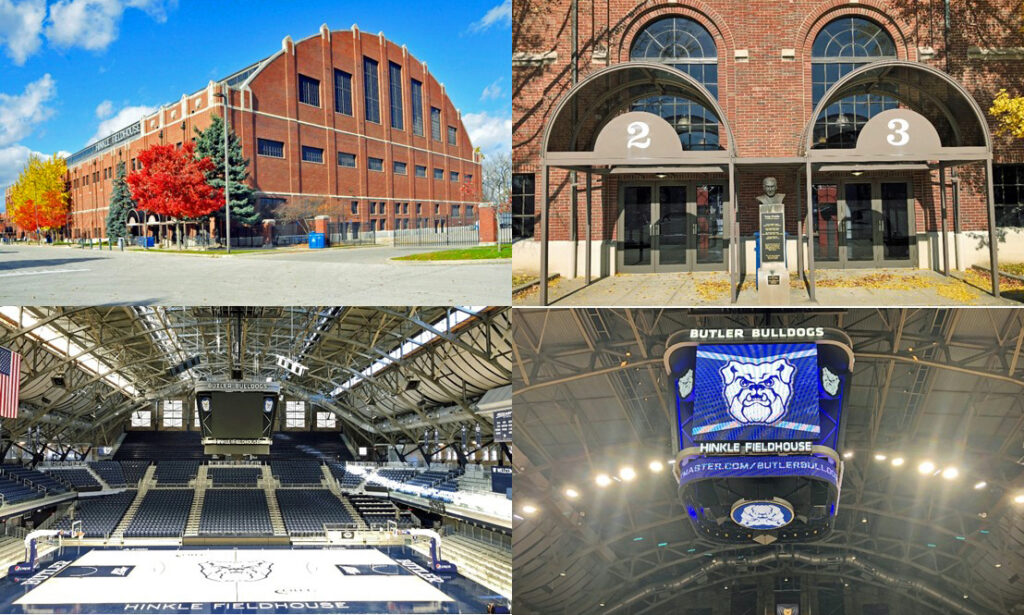In 1921, 22-year-old Paul D. (“Tony”) Hinkle, two-time basketball All American at the University of Chicago, became assistant basketball coach at Butler University, then in Irvington. In 1924, Butler won the AAU national tournament as Butler was planning a move to its current location. Butler hired Indianapolis architect Fermor Spencer Cannon to design a facility worthy of a national champion. Hinkle became head basketball coach in 1926 and construction of the brick and stone arena at the corner of Boulevard Place and 49th Street began in 1927. When completed a year later, Butler Fieldhouse, engineered so all 15,000 fans had an unobstructed court view, was the largest basketball arena in the United States, a rank it maintained until 1950. In the inaugural game on March 7, 1928, the Hinkle-led Bulldogs defeated top-ranked Notre Dame in overtime. In 1929, Butler again defeated Notre Dame and won its second national basketball championship. During World War II, the fieldhouse was a barracks. In 1966, with Hinkle serving as both head basketball and head football coach, Butler’s trustees renamed the building “Hinkle Fieldhouse.”
Until 1972, Hinkle Fieldhouse hosted the finals of the Indiana High School Boys Basketball Tournament, the oldest such tournament in the country, including the 1954 game in which Milan defeated Muncie Central. The state championship scenes in the movie “Hoosiers,” inspired by that famous game, were filmed in the fieldhouse. In the 1935 Butler Relays, Jesse Owens set an indoor record in the 60-yard dash in the fieldhouse, which has hosted six presidents and religious leaders including Billy Graham. Hinkle Fieldhouse, named a National Historic Landmark in 1987, inspired the exterior of what is now Gainbridge Fieldhouse. A $36.2 million renovation completed in 2014 added 4500 chair seats and a new scoreboard. It is open for self-guided tours on weekdays from 8:30 a.m. to 5:00 p.m.
